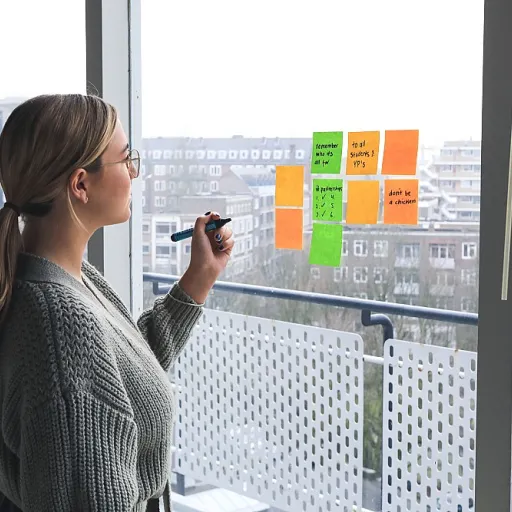
Understanding Source to Settle Procurement
Grasping the Source to Settle Workflow
In today's fast-evolving business landscape, effective procurement management is vital in bridging the gap between sourcing and settling transactions. The Source to Settle (S2S) process encompasses every step involved in obtaining goods and services, right from the initial sourcing to the final settlement, making it a crucial component of modern businesses. The procurement process begins with strategic sourcing, where organizations identify and evaluate potential suppliers. This phase includes detailed assessments to ensure that the selected vendors align with the company’s objectives and compliance requirements. Establishing strong supplier relationships is key, as it directly impacts the quality and cost of goods. As the process unfolds, companies engage in contract management to solidify terms and conditions that govern vendor transactions. Effective management of these contracts ensures seamless procure-to-pay processes, ultimately enhancing operational efficiency and delivering cost savings. The purchase order serves as a formal request for goods or services, issued to suppliers post-contract agreement. This step is vital for maintaining clarity and transparency throughout the procurement processes. Real-time visibility into invoicing and accounts payable is essential to streamline invoice processing, ensuring timely fulfillment of payments to suppliers. An efficient settle process not only supports financial management but also fosters trust and loyalty with suppliers. For more insights on optimizing sourcing efficiency, explore the techniques and strategies to enhance operational efficacy here. The interplay between supply chain management and cost savings can significantly impact business outcomes. The source pay cycle demands meticulous attention to payment schedules and compliance adherence, ensuring the organization meets its financial obligations without delays. This meticulous orchestration of the procurement and settlement phases underscores the importance of adopting strategic methodologies that align procurement with broader organizational goals.Key Challenges in Source to Settle
Complexities in Streamlining Procurement
In the intricate world of source to settle, the procurement process often faces several challenges. These challenges can significantly impact the efficiency and effectiveness of procurement management across various sectors.- Limited Visibility: A recurring obstacle in procurement is the limited visibility across supply chains. Without clear insight into supplier management and supplier relationships, tracking goods and services from source to purchase can be cumbersome.
- Compliance Risks: Ensuring compliance in procure pay activities requires robust contract management. Non-compliance not only risks legal penalties but also affects supplier contracts and vendor relationships.
- Inefficient Processes: Traditional procurement processes often rely heavily on manual invoice processing and purchase order management. These outdated methods can slow down the procure to pay cycle, affecting overall operational efficiency and increasing costs.
- Supplier Reliability: Establishing strategic sourcing partnerships is essential, yet dependent on the reliability and efficiency of suppliers. Any disruption can lead to delays in the settle procure cycle.
- Cost Management: Achieving cost savings while maintaining quality is a delicate balance. Inadequate cost management can lead to budget overruns and depleted resources.
Technological Innovations in Procurement
Technological Advancements Redefining Procurement Efficiency
Harnessing technology in the procurement process is transforming the way organizations handle strategic sourcing, contract management, and supplier relationships. Here's how these innovations are making waves:- Real-Time Data and Visibility: With enhanced data analytics, the entire source to settle process benefits from real-time visibility, allowing procurement teams to track goods and services seamlessly. This not only improves supplier management but also bolsters compliance and operational efficiency.
- Automation of Repetitive Tasks: The use of automated software streamlines procure-to-pay workflows, reducing the burden of manual invoice processing and increasing cost savings. This automation ensures swift accounts payable reporting and minimizes errors in purchase orders and payments.
- Cloud-Based Solutions: Leveraging cloud platforms in the procurement management sphere offers scalable and flexible solutions. These platforms support strategic sourcing initiatives and allow for more dynamic contract management, enhancing supplier interactions and procurement processes.
- Integration of AI and Machine Learning: AI-driven insights are set to revolutionize procurement efficiency by predicting market trends, optimizing supplier selection, and mitigating risks. Machine learning algorithms help in forecasting demand and securing better vendor terms, driving cost-effective purchase strategies.
Best Practices for Implementation
Proven Techniques for Enhanced Procurement
Implementing best practices in procurement involves a deep understanding of the various facets of the source to settle process. By focusing on key elements, organizations can streamline their procurement processes, resulting in significant cost savings and improved supplier relationships.
Enhancing Strategic Sourcing
Strategic sourcing is at the core of effective procurement management. By fostering strategic supplier partnerships, companies can gain better visibility into their supply chain, ensuring that they procure the right goods and services at the right time. This involves diligent supplier management, assessing supplier performance, and employing strategic sourcing techniques to manage contracts effectively.
Optimizing Purchase Processes
For a seamless procurement workflow, optimizing purchase processes is essential. This involves automating purchase orders to reduce manual errors and improve processing time. By integrating procure-to-pay systems, organizations can ensure that purchase orders align with strategic goals, leading to faster invoice processing and a smoother settlement process.
Ensuring Contract Compliance
Contract compliance is crucial in maintaining robust procurement practices. Effective contract management ensures that all terms and conditions with suppliers are met, thus avoiding potential conflicts and compliance issues. Establishing clear vendor agreements and monitoring adherence can lead to better cost control and operational efficiency.
Improving Accounts Payable Efficiency
The accounts payable aspect of procure-pay requires careful management to ensure timely and accurate payments. Implementing real-time payment systems can enhance cash flow management, while automated invoice processing can minimize delays and errors. Streamlining these processes not only improves payment accuracy but also strengthens vendor relationships.
Leveraging Data for Procurement Insights
Data analytics can offer profound insights into procurement activities. Using real-time data, organizations can make informed procurement decisions, gain visibility into supply chain operations, and identify areas for potential cost savings. Analyzing supplier data helps in building strong supplier relationships and optimizing supply strategies.
Case Studies: Success Stories
Real-World Examples of Procurement Transformation
Exploring how companies harness strategic sourcing and procurement processes provides valuable insights. In real-world scenarios, the integration of advanced technologies and streamlined procurement management can lead to remarkable transformations. One company embarked on a journey to overhaul their procurement process by introducing an automated procure-to-pay system. This transition not only enhanced their supplier management but also reduced manual effort in invoice processing. Implementing such systems in procurement processes has shown a significant reduction in processing time, resulting in improved payment efficiency and compliance with contract management. Another example illustrates how strategic sourcing initiatives transformed the operation's visibility on cost savings within their supply chain. Through effective supplier relationships and strategic cost management, the organization achieved better negotiating power with vendors, leading to substantial savings on goods and services. This case highlights the importance of proactive supplier engagement and real-time data utilization. Moreover, a business focused on source-to-settle enhancements managed to improve operational efficiency by leveraging supplier management tools. This not only streamlined the entire procurement process but also led to better purchase order accuracy and increased compliance with procurement standards. These case studies reflect how the optimization of the source-to-settle process and technological advancements in procurement can lead to elevated procurement outcomes. In understanding these success stories, businesses can identify key factors to drive their procurement efficiency and enhance supplier relationships in a competitive market landscape.Future Trends in Procurement Technology
Emerging Trends Shaping the Future of Procurement
The landscape of procurement is continuously evolving, driven by technological advancements and changing business needs. As organizations strive for greater efficiency and cost savings, several trends are emerging that promise to redefine the source to settle process.
AI and Machine Learning in Procurement
Artificial intelligence (AI) and machine learning are transforming procurement management by enhancing decision-making and automating routine tasks. These technologies provide real-time insights into supplier performance and procurement processes, enabling strategic sourcing and contract management. AI-driven analytics help organizations optimize their procure to pay processes, ensuring better compliance and cost savings.
Blockchain for Enhanced Transparency
Blockchain technology is gaining traction in procurement for its ability to offer unparalleled visibility and security. By creating an immutable ledger of transactions, blockchain ensures transparency in the supplier management process. This technology can streamline the settle process by reducing fraud and errors in invoice processing and accounts payable.
Cloud-Based Procurement Solutions
Cloud technology is revolutionizing procurement by offering scalable and flexible solutions. Cloud-based platforms facilitate seamless integration of procurement processes, from purchase order creation to payment processing. These solutions enhance operational efficiency and provide strategic insights into supplier relationships and supply chain dynamics.
Focus on Sustainable Procurement
As businesses become more environmentally conscious, sustainable procurement is becoming a priority. Organizations are increasingly considering the environmental impact of their sourcing and supplier choices. This trend is driving the adoption of procurement processes that prioritize eco-friendly goods and services, aligning with broader corporate sustainability goals.
Data-Driven Procurement Strategies
Data analytics is playing a crucial role in shaping procurement strategies. By leveraging data, organizations can gain insights into procurement trends, supplier performance, and cost structures. This data-driven approach enables more informed decision-making and enhances the overall procurement process, leading to significant cost savings and improved supplier relationships.












